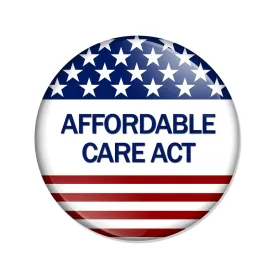In this episode of the Proskauer Benefits Brief, senior counsel Damian Myers and associate Liz Down examine the IRS’s enforcement of the Affordable Care Act’s (ACA) employer shared responsibility mandate. We discuss how the IRS is assessing penalties and offer tips on what employers can do when they receive assessment notices. Be sure to tune in for the latest insight on this very important issue.
Damian Myers: Hello, and welcome to the Proskauer Benefits Brief. I’m Damian Myers and on today’s episode I’m joined by Liz Down. We’re going to talk about the ACA Employer Assessment letters that the IRS has started to send out.
Certainly not a topic that a lot of employers are looking forward to, the Employer Mandate has been floating around for a couple of years, but now the IRS has actually enforcing it, and employers might be seeing some penalties.
The employer mandate applies to only large employers, and that’s employers with 50 or more full time employees or full-time equivalents. Now that threshold applies on a controlled group basis, so if it’s an employer who has subsidiaries you add up all those employees to determine whether or not this mandate applies.
If the mandate applies to you, you have two responsibilities. One, you have to provide an offer of minimum essential coverage to 95 percent of your full-time workforce. And, two, even if you do offer coverage to 95 percent of your full-time workforce you have to provide affordable and minimal-value coverage to all full-time employees.
There are two separate penalties. The 95 percent test is subject to a very large penalty which we’ll refer to as the ‘A’ penalty. That penalty is assessed on each full-time employee as long as one person gets the credit on the health exchange marketplace. The smaller penalty applies only to full-time employees who get a premium tax credit on the health exchange marketplace.
So over the last few years employers have made large efforts to make sure that they comply with these two requirements, but they haven’t really known when, if or how the IRS is going to assess these penalties.
Well, now we know. And late 2017 the IRS sent out notice that they’re going to start assessing penalties by sending letters to employers. Liz, how exactly are they going to do this?
Liz Down: So the IRS has started sending out initial notices to certain employers that it has determined owe an employer-shared responsibility penalty based on the reporting forms that the employer filed for that particular year.
So these initial notices are called a 226-J letter, but we’ll keep referring to it as the initial notice to keep things simple.
The initial notice gives you the bad news right up front – the proposed penalty. Now, when you see it, don’t panic. It might not be as bad as it looks.
Then it explains the penalty process and how you can respond to the initial notice, and it gives some background on the basis for the penalty.
After that, there’s a summary table that shows how the IRS calculated the proposed penalty with an explanation of all the information that’s in this table.
They also include a form called Form 147-64 for your response to the proposed penalty and that form also includes a list of the full-time employees who got a premium tax credit from the health exchange marketplace, and that is Form 147-65.
That list of full-time employees is helpful information to have so you can go back to the reporting forms for those employees and kind of try to figure out what happened.
Now, the letters that the IRS is sending right now are to enforce 2015 compliance. And that year had some special transition relief that made it easier to satisfy the employer mandate.
Damien, do employers really have anything to worry about with respect to 2015?
Damian Myers: So, Liz, you make a great point. In 2015 there was this transition relief that reduced the 95 percent test to the 70 percent test. So the ‘A’ penalty was easy to avoid, but there’s still the ‘B’ penalty that might come up. So certainly employers have to be on the lookout for these forms.
So what do you do if you get one? Well, the first thing to do is take a look at the summary table that’s provided in the initial notice. Compare it with the premium tax credit listing that they provide on the form, and then go back and look at your records and make sure that it’s correct.
If everything looks right, then the only option is to really pay the penalty and send it to the IRS. But if there’s something that’s wrong, you can contest it. What you would do is you fill out a Form 14-764, indicate your disagreement, and provide supporting documentation for your disagreement. This is important to keep important records which we’ll get to in a minute.
Once you send that to the IRS, they’ll either respond with a supplemental request or they’ll just simply tell you that there is no assessment, which would be great news for an employer that’s facing a big penalty.
So the big question is what steps should employers take to avoid being assessed the penalty. Well, of course you can make an offer to 95 percent of your workforce, full-time workforce. And then you can also check affordability and minimum value to make sure that you’re avoiding the ‘B’ penalty.
However, discrepancies happen in reporting forms. People may go to the exchange and indicate that they didn’t get an offer when they really did. So to some respect, getting one of these notices might simply be unavoidable.
So assuming there’s at least a chance that an employer can receive an assessment, Liz, what can employers do to make their lives easier when a 226-J hits the mailbox?
Liz Down: Our first tip is to keep detailed records on employee status – who is full-time versus part-time; who is a seasonal employee, and to have those records easily accessible.
The second tip is to keep your enrollment records from your health benefit enrollment that shows who you made an offer of coverage to, who enrolled in coverage, and records of your affordability calculations, and to be able to access all of that information for prior years pretty easily.
Remember, it is 2018 now, and the IRS is just asking about stuff that happened in 2015. That’s a while ago.
And our third tip would be to reach out to your counsel and your consultants to say, “Is there anything else that I can be doing in anticipation of potentially getting one of these notices?”
And that’s really all you can do to prepare. Damien, do you have anything else to add?
Damian Myers: No. I think that’s about it. Thanks, Liz, for these excellent insights and thanks, everyone, for joining us today on the Proskauer Benefits Brief. Stayed tuned for more legal insights on employee benefits and executive compensation and be sure to follow us on iTunes.



 />i
/>i
